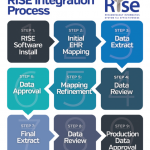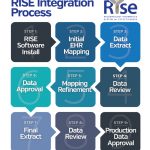In 2018, all providers will have to submit an entire year’s worth of their quality measure data to the CMS. After 2017, the transition year, the requirements and performance thresholds begin to increase.
The CMS is still heavily incentivizing participation in a Qualified Clinical Data Registry (QCDR), such as the RISE registry, for reporting in MIPS. There are still many bonuses to help providers increase their scores and protect themselves from penalties in the 2018 performance year.
More Exempt Providers in 2018
The CMS has increased the low-volume threshold, which will exclude more providers from reporting in 2018. Rheumatologists will be excluded from MIPS reporting if they have ≤$90,000 in Part B allowed charges or ≤200 Part B beneficiaries.
MIPS Composite Score
Under MACRA, the quality of care you provide will be determined by the “MIPS composite score.” Because this law must be budget neutral, there must be winners and losers. To do this, the CMS will determine the average score of providers; anyone above that score will get bonuses while providers below it will get a penalty. The various degrees of bonuses and penalties are determined by how many standard deviations you are away from the CMS’ determined average.
The MIPS composite score comprises four categories:
- Quality (replaces PQRS): 50%
- Clinical practice improvement activities (new category): 15%
- Advancing care information (replaces meaningful use): 25%
- Cost (replaces the value-based modifier): 10%
One positive change in the final scoring is the small practice bonus: The CMS will be adding five points to the final score of all practices that have 15 or fewer providers.
Help Your Scores with RISE
Another positive in this process: You can raise your scores by using the RISE registry. Following are a couple examples of what to do.
Quality
For 2018, providers must report on 60% of all their patients, regardless of payers. Providers will be scored on their best six measures, one of which must be an outcome/high-priority measure. This is made easy by the RISE registry, because the data used for reporting on these quality measures are extracted electronically and do not have to be entered by the provider.
The RISE registry will have a total of 18 measures: two of which are an outcome measure and another six are high-priority measures. In addition, one of the ACR’s own quality measures, ACR7, has been designated as an outcome measure for 2018. This means that rheumatology now has its own outcome measure for reporting for the first time in Quality reporting.

